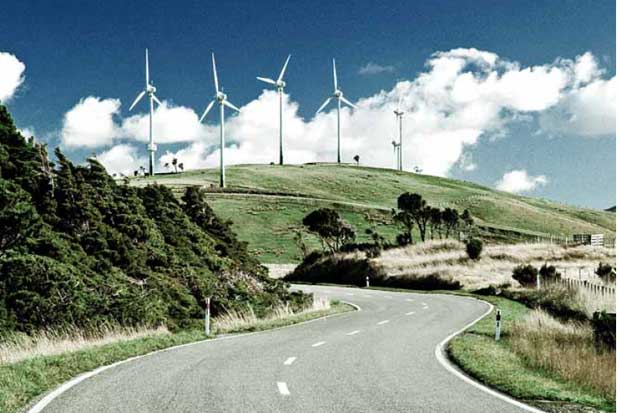The Australian Capital Territory government has launched its second wind farm ‘reverse auction’, as Environment Minister Simon Corbell moves to capitalise on the uncertainty plaguing the national Renewable Energy Target, and hones in on an ambitious clean energy goal.
Under the reverse auctions companies compete to offer the lowest price for supplying wind power to the government and benefit through a feed-in tariff that establishes a fixed, guaranteed, and premium rate for renewable electricity generated by successful companies.
The results of the first round of reverse auctions were announced in February as federal negotiations over cuts to the Renewable Energy Target dragged on. The ACT Government contracted 200 megawatt hours of wind energy at a record-low cost for clean energy in Australia.
As uncertainty plagued the federal scheme, investors were looking for projects protected by a stable and supportive policy environment, and despite the tussling over the Commonwealth policy being now apparently at a standstill, Corbell is expecting similar results in the second round of bidding.
The second reverse auction opened today and is slated to close on 30 September. When the successful wind farms come online in 2018 the ACT is projected to draw 80 per cent of its electricity needs from renewables, Corbell said.
The government’s modelling predicts the cost of meeting the ambitious 90 per cent target will be just $4.67 a week per household at its peak in 2020, and will decline afterwards.
The reverse auctions are distinct from the national Renewable Energy Target, which legislates to mandate a set market of ‘Clean Energy Certificates’ that electricity retailers are forced to buy each year, and renewable energy producers compete to be given by the government.
However, when federal legislation expanding the Renewable Energy Target was passed in 2009 states and territories’ dealt away their ability to create a similar scheme (which compels electricity retailers to buy up Clean Energy Certificates) in their own jurisdiction.
As the Commonwealth stoush over the Renewable Energy Target saw investment in clean energy plunge by 88 per cent nationally in 2014, state and territory governments’ ability to develop a renewable energy industry was unexpectedly diminished.
But under the first wind reverse auction alone the advanced ACT scheme contracted enough wind energy to supply more than 100,000 Canberra homes.
At the time, the ACT Government said that the reduction in carbon pollution was the equivalent of taking 157,000 cars off the road and would amount to around 33 per cent of Canberra’s energy demand by 2020.
“There is an abundance of excellent wind power projects looking for long-term contracts, and amid continuing uncertainty under the national scheme, this is the optimal time for the ACT Government to call for [a second round of]proposals,” Corbell said today.

The first round of auctions fetched prices as low as $81.50 per megawatt hour of electricity which, depending on which way you slice the calculations, is impressively close to parity with coal.
Projects that apply under the reverse auction scheme are assessed against risks to timely completion, their level of community support and their plan to grow ACT jobs.
The second reverse auction will create contracts for another 200 megawatt hours – enough renewable energy for another 106,000 homes – and is accompanied by a separate program of reverse auctions open to the solar industry.
It comes a week after the Select Committee on Wind Turbines – headed by a cabal of anti-wind crossbenchers – tabled a blistering report which slammed ‘big wind’ and gave credence to unsubstantiated claims that wind farms are damaging to human health.
In stark contrast Corbell, like other state Labor governments, has emphasised the jobs and skills the ACT’s clean energy deployment will bring (in spite of all three wind projects which were successful under the first auction being located outside the ACT).
“Renewable energy jobs are growing in the ACT with new national and international operations hubs being established and major research, education and training partnerships being formed,” he said.
“This new auction will further grow our ability to provide knowledge-based services to the multi-trillion dollar global renewable energy industry.”
Last year new investment in renewables reached a near-record $270 billion globally and in a recent report the International Renewable Energy Agency found it had created nearly eight million jobs around the world to date.
In the face of the Abbott government’s efforts to “reduce the number of [wind turbines]that we are going to get in the future” other states, including Queensland, are investigating how they can mirror the ACT model and reduce their exposure to Commonwealth grappling over climate ambition.
According to the ACT Government, it’s likely that the cost of reaching 90 per cent renewables within five years will be largely offset by gains predicted to come from its programs targeting energy efficiency.
Donate To New Matilda
New Matilda is a small, independent media outlet. We survive through reader contributions, and never losing a lawsuit. If you got something from this article, giving something back helps us to continue speaking truth to power. Every little bit counts.



